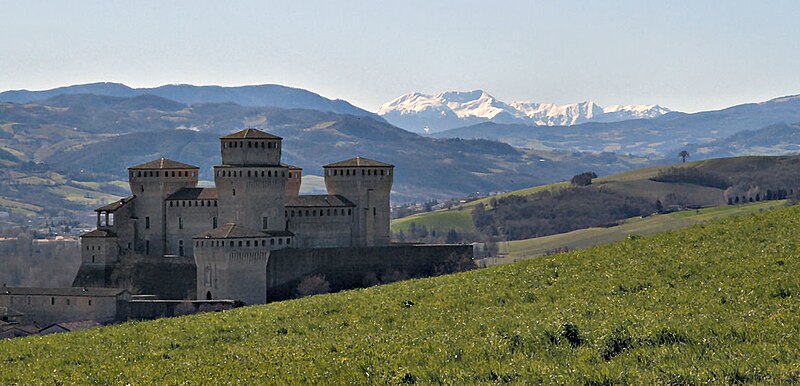The pictures you posted, Huck, are on the lower level, by Cesare Baglione, end of XVI century, as the caption next to the floor plan for that floor, on the link you provided, clearly states (well, it's in Russian, so you're forgiven). They are from the Sala della Vittoria (see
http://www.flickr.com/photos/csomers/4084957401/) and/or other lower rooms, such as the Room of the Jugglers (or Acrobats). These figures are done in the "grotesque" style popular in Rome, Venice, and elsewhere in Italy .starting at the end of the XV century. Pinturiccio did a lot in that style. Your images might be useful for an understanding of 16th century Italian hieroglyphs, but I doubt it. An article at
http://lemiroirauxpreles.fr/Grotesques.htm discusses grotesques in terms of hieroglyphs. Well, the grotesques of Nero's time, when discovered in 1480, were thought to be hieroglyphs, it says. Grotesques had an air of paradox. And the grotesques on the ceiling of the library of the Abbey of S Giovanni Evangelista, c. 1575, Parma were painted with hieroglyphs and alchemical signs in the mix, the article says. I will have to read more. Thanks for helping me to find that interesting web-page (the French one, not the Russian). Except in relation to hieroglyphs, I don't see their relevance to tarot history.
The upper level has the ones that are of interest to 15th century history. They are probably by Benedetto Bembo, as the link states. I discussed them at
viewtopic.php?f=11&t=365&p=5200&hilit=B ... embo#p5200 ("The 5x14 Theory: An Investigation, Part 2" for Dec. 3, 2009).
Added next day: that the Nero-era grotesques, discovered 1480, were thought to be hieroglyphs (in burial chambers, no less) might have influenced the style of the SB pips, which are more grotesque than their predecessors, the "parchment book" of Zoppo: the style would further identify the cards as hieroglyphs.




